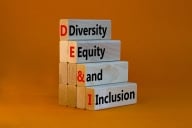You have /5 articles left.
Sign up for a free account or log in.
For more than 20 years, I’ve been teaching a college course on the science of well-being. When we get to the topic of the psychology of courage, I begin with a single question: Were the Sept. 11 hijackers courageous?
The conversation often gets heated. A few reflexive reactions emerge. Someone usually says something to the effect of “Absolutely not! They’re cowards!” This year, I had a Middle Eastern student who took the risk of disagreeing with rising public sentiment in the class. She noted the importance of acquiring the terrorists’ perspective, understanding their culture and belief system. In prior years, veterans enrolled in my class explained that sometimes violence is necessary to protect your country.
Opinions on courage generate intense emotions. Conversations are tough to moderate. It would be a lot easier if we just showcased a PowerPoint slide with the prevailing definition of courage. No conflicts. No extemporaneous thinking. But we’d do so at a cost: we’d have fewer opportunities for curiosity, intellectual humility and the exchange of perspectives. We don’t want students passively digesting the definition of courage. We want them to think and be courageous enough to share their thoughts, unvarnished and uncensored.
To understand the complexity of human behavior and society, we must embrace hard questions and respectfully consider alternative views. Worrying about whether you can ask questions and challenge others’ views is antithetical to education.
And we in higher education must confront a lot of hard questions and problems. There are racial problems. Research shows that teachers often label misbehaving students as troublemakers and discipline them more severely if they are Black individuals than if they are white ones. For reasons beyond their control, Black students are less likely to graduate high school and enter and graduate college compared to white students. Black instructors receive significantly worse anonymous student ratings on teaching quality and credibility than white ones do.
There are social class problems. Students from lower socioeconomic backgrounds lack cultural capital, insider knowledge of books they should have read and social connections that provide entry into groups that afford greater opportunities. As such, their feelings of incompetence tax their energy to perform at high levels inside and outside the classroom.
Then there are campus climate problems. National surveys indicate a rise in the number of college students reluctant to share views on controversial topics in the classroom. In a survey conducted by Heterodox Academy, three out of five students said they self-censored due to fears “other students would criticize my views as offensive,” while one out of three students worried “the professor would say my views are wrong.” With a high level of liberal leanings in professors at traditional universities, some more conservative ideas seem to be, and often are, verboten. And while professors receive salaries to assess, teach and study complex societal issues, forms of censorship are common—including barring them from testifying on the issue of campus mask mandates and canceling lecture appearances because, for example, they offer alternatives to existing race-based affirmative action policies.
Taboos in the Academy
Problems in the education system span the political spectrum. Given that wide range of problems, colleges and universities are experimenting with interventions—from antiracism education to well-being initiatives to the reduction of legacy, wealth-based and athletic admissions. In fact, a few months ago, a collection of intellectuals announced the launch of an entirely new university, the University of Austin, or UATX, ostensibly to right some of these wrongs. They proposed an experiment to produce an educational experience “fully committed to freedom of inquiry, freedom of conscience, and civil discourse.”
The plan is to be “fiercely independent,” both financially and politically—a university where controversial topics are open to contemplation and an evaluation of the existing evidence. As colleges and universities grapple with a history of racial, class and ideological discrimination, there is value in creating an institution that adheres to such lofty commitments as exploring the nature of humanity, even if the results are uncomfortable.
Perhaps the biggest challenge at the University of Austin—or any educational experiment—is the design of the culture. How do you establish a culture that permits and embraces minorities, whether defined by number, power, status or demographics? How do you protect dissent? How do you create a place where people can ask provocative questions without being canceled and others can respond with subsequent questions and concerns about the initial provocation?
What truly determines whether freedom of inquiry exists in a university is how people respond when the minority points out dysfunctional beliefs and practices the majority holds. When you create something from scratch such as the University of Austin, you are no longer the outsider raging against the machine. The institution becomes the machine. Thus, you must build in protective mechanisms such that people can disagree with the institution. People are fallible, and thus the institution you create will be, as well. Course corrections will be inevitable. Students, faculty and stakeholders must be empowered to initiate them.
A Proposed Charter of 10 University Principles
As a longtime professor at George Mason University, I’m familiar with a number of problems with the current educational system and have some thoughts of my own on how to fix them. I’ve developed a proposed charter for a university trying to do what UATX aspires to do, composed of 10 principles for higher education institutions interested in building academic, intellectual and social communities. Principles are a set of rules or truths that withstand the test of time. With clear principles, a university holds a beacon for making hard choices. Here are those I recommend.
- The Illusory Danger Principle. If you can think of a question, you can ask it. The only dangerous question is the belief that dangerous questions exist.
- The Benevolent Intention Principle. Encourage others to speak by letting them know that you will work hard to react with charity, curiosity and the assumption of positive intent. When speaking, you should receive the same receptivity unless there is incontrovertible evidence to suggest otherwise.
- The Likability Principle. Reduce the impact of how much you like or dislike people when it comes to making judgments about the content of their messages and how you treat them. Know that likability is often irrelevant to the legitimacy of ideas. We must separate the message from the messenger.
- The Individual Differences Principle. Resist treating individuals as representatives of their groups. There is often more heterogeneity within groups than between groups.
- The Open-Minded Principle. Balance the pressures for conformity with a willingness to explore alternative ideas and perspectives. Remember that being open and curious does not imply any commitment to changing views.
- The Broad Diversity Principle. Broaden definitions of diversity to go beyond what is visible to include categories of class and socioeconomic status, adversity, neurodiversity, and individual differences in temperament and personality. Remember that attracting diverse individuals is pointless unless you do the harder part of working with them, valuing and encouraging their uniqueness.
- The Ad Hominem Principle. Resist the temptation to label people as simply “bad” or sexist, racist, homophobic, elitist, an ideologue, a snowflake or the like. Instead, engage in the more nuanced task of grappling with the quality of their ideas and solutions.
- The Independent Thinking Principle. Be aware of cognitive biases that afflict everyone, especially confirmation bias and motivated reasoning. Hold the same standards for evidence whether it agrees or disagrees with your initial and preferred positions.
- The Behavioral Evidence Principle. Rely on evidence as much as possible, even if this leads toward answers that conflict with your assumptions and preferences.
- The Personal Evolution Principle. Each person must commit to learning and growing. This means being willing to let go of ideas that are no longer working or that fail to survive empirical scrutiny.
We don’t know if the University of Austin experiment will abide by the principles above. We can hold out hope. Meanwhile, perhaps existing college and university administrators will read this list and conduct audits of how well they align daily actions with these principles. Let’s produce educational environments that incubate future leaders who possess fortitude and flexibility, knowledge and creativity. The arc of human progress has always depended on those who do.








